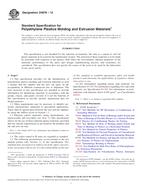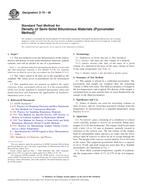1.1”These product consistency Test Methods A and B provide a measure of the chemical durability of homogeneous glasses, phase separated glasses, devitrified glasses, glass ceramics, multiphase glass ceramic waste forms, or combinations thereof, hereafter collectively referred to as ”’glass waste forms”’ by measuring the concentrations of the chemical species released to a test solution under carefully controlled conditions.
1.1.1”Test Method A is a seven-day chemical durability test performed at 90 ” 2 ”C in a leachant of ASTM-Type I water. The test method is static and conducted in stainless steel vessels. The stainless steel vessels require a gasket to remain leak-tight (see Note 1) The stainless steel vessels are considered to be ”’closed system”’ tests. Test Method A can specifically be used to evaluate whether the chemical durability and elemental release characteristics of nuclear, hazardous, and mixed glass waste forms have been consistently controlled during production. This test method is applicable to radioactive and simulated glass waste forms as defined above.
Note 1:”TFE-fluorocarbon gaskets, available commercially, are acceptable and chemically inert up to radiation doses of 1 ” 105 R of beta or gamma radiation which have been shown not to damage TFE-fluorocarbon. If higher radiation doses are anticipated, special gaskets fabricated from metals such as copper, gold, lead, or indium are recommended.
Product Details
- Published:
- 02/01/2021
- Number of Pages:
- 27
- File Size:
- 1 file , 610 KB
- Redline File Size:
- 2 files , 1.4 MB


